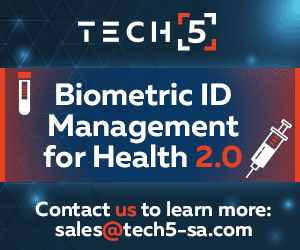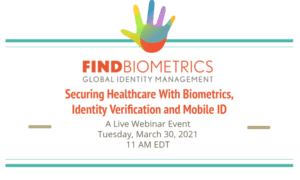March is Healthcare Biometrics Month at FindBiometrics, with last week’s in-depth feature exploring how biometric technology can be used to identify patients at the hospital, and thereby help to improve outcomes while reducing costs. This week, we’ll take a look at how biometric technology is helping to provide care outside of the hospital.
Remote care has been a steadily rising trend for several years, with various technological advancements enabling healthcare providers to track certain health metrics of patients even when the patients are secluded in the comfort of their own homes. And in the wake of a pandemic that has seriously strained healthcare systems around the world and prompted the implementation of social distancing guidelines, it’s a good time to look at how these remote care technologies are continuing to evolve.
Wearable Innovation
Biometric remote care solutions have emerged along with the rise of wearable devices, and there are now a number of biometric wearables that offer healthcare applications, through a variety of approaches. Olea Sensor Networks, for example, released a lightweight heart and respiration rate tracker a few years ago that can be worn in a shirt pocket. More recently, a “BioSticker” device that can track a number of metrics including body temperature, heart rate, and even body position was embraced by The Leukemia & Lymphoma Society in a study that will monitor hematological cancer patients.
Also notable is a recent collaboration between Carium and Perfect Care that produced a mobile app designed to work with a FitBit fitness tracker and connected blood pressure cuff and digital scale to deliver a more comprehensive remote care solution that can help to minimize the need for in-person visits to the doctor. And that points to the growing sophistication of commercial fitness tracking devices – like FitBit wristbands and their rivals – and their potential utility in healthcare applications.
COVID Adaptations
These technological advancements have been stoking growing interest from the healthcare sector, and the COVID-19 pandemic has only helped to spur these trends further. Right at the start of the pandemic, for example, VivaLNK, a connected healthcare solutions specialist, teamed up with Chinese tech giant Alibaba on a remote patient monitoring system that uses a wearable sensor to track the temperature of the end user, enabling healthcare providers to watch for the signs of fever that can accompany COVID-19 infection.
This approach led to a rapid evolution. As discussed in our first Healthcare Biometrics Month feature, tech innovators in the U.S. were exploring the use of biometric wearables to detect COVID-19 as early as April of 2020, and by the end of the year, even the US military was trialing the use of technology from commercial wearables makers like Garmin and FitBit to detect the early signs of COVID-19 in its ranks. The effectiveness of this approach was vividly illustrated just a week ago, when the CEO of the biometric wearables company BioStrap published wearable-derived data about his own COVID-19 infection.
Beyond Wearables

Remote healthcare isn’t just about wearables, though. The biometric technologies embedded in smartphones have made some of them start to look like promising tools for health tracking along the lines of fitness-tracking wristbands, and Google recently announced a software update enabling Android users to leverage their devices’ cameras in order to assess respiration and heart rates.
Then there are entirely different device categories helping to facilitate healthcare outside of hospitals. There are innovative new inventions for that use biometrics to regulate the distribution of medication in a patient’s own home, such as the Pillo. There are biometric vending machines designed to distribute opioids in order to combat the public health issue of overdosing. And a startup developer of biometric kiosks that can be deployed in places like grocery stores and community centers raised $30 million in a single funding round last year.
These are exciting new parts of the remote care frontier, and further illustrate the important role that biometric technologies are playing in helping the healthcare sector to find innovative ways of delivering care while reducing the burden that in-person hospital visits can place on the system. For many, the COVID-19 pandemic will have made the need for this kind of innovation all the more obvious, which should in turn deliver even more innovation to the vanguard of remote care going forward.
*
Healthcare Biometrics Month is sponsored by IDEMIA, TECH5, and Veratad.
–
March 18, 2021 – by Alex Perala







Follow Us